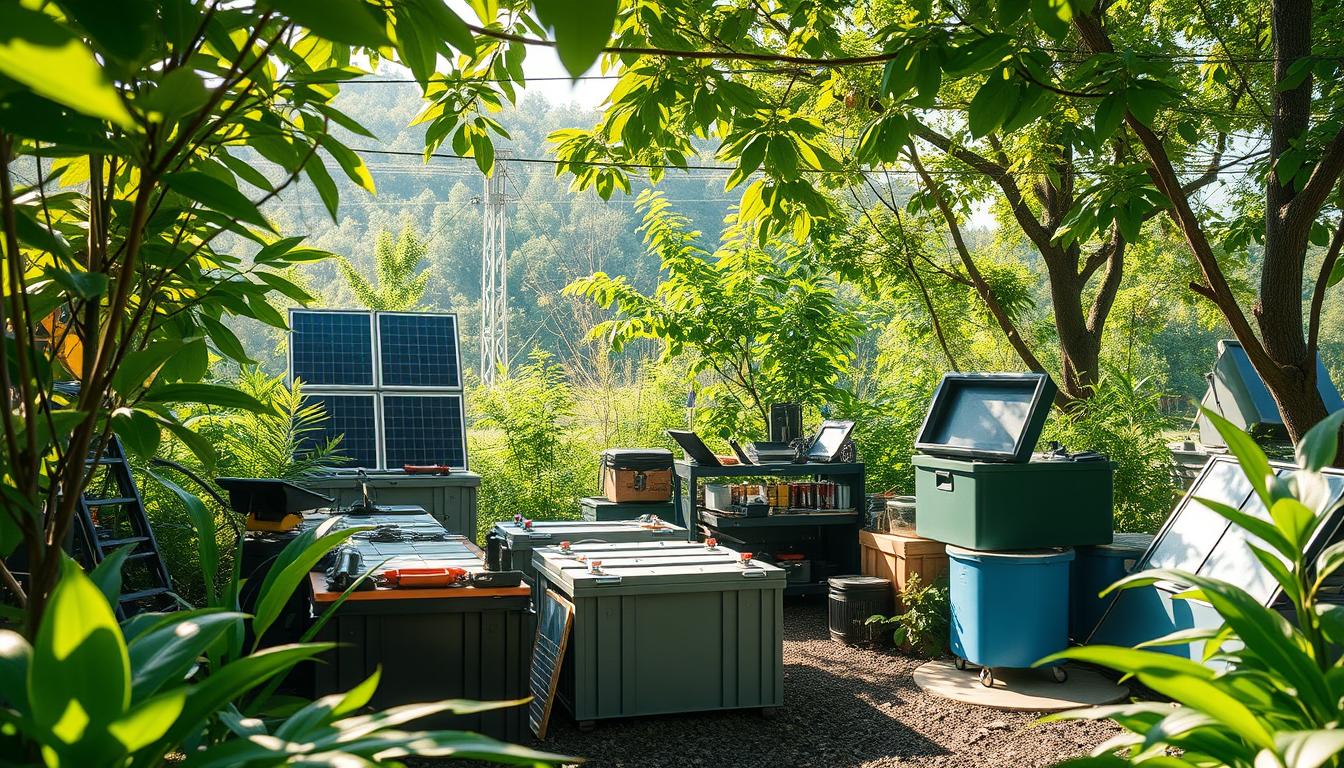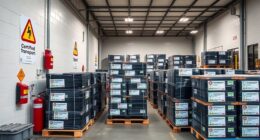Battery reconditioning works by restoring worn-out batteries to near-original performance through techniques like deep discharges for lead-acid types or balancing cells in lithium-ion batteries. It matters because it saves you money, extends battery life, and helps reduce environmental waste. Proper reconditioning supports sustainable energy practices and prevents premature disposal. Interested in how this process can benefit you and the environment? Keep exploring to discover more about making your batteries last longer.
Key Takeaways
- Battery reconditioning involves restoring degraded batteries through specific techniques like deep discharges or chemical treatments.
- It extends battery life, reduces costs, and minimizes environmental waste by delaying the need for replacement.
- Reconditioning methods vary for different batteries, including lead-acid, lithium-ion, and others, ensuring safe and effective restoration.
- Proper reconditioning supports renewable energy systems by maintaining reliable energy storage and reducing resource consumption.
- Understanding reconditioning promotes sustainable practices, improves battery performance, and helps protect the environment.

If your batteries are losing their charge more quickly than they used to, reconditioning them can be a cost-effective solution. Over time, batteries degrade due to repeated charging cycles, which diminishes their ability to hold a full charge. Instead of immediately replacing them, you can extend their lifespan through reconditioning, saving you money and reducing waste. This process plays a crucial role in the larger picture of battery recycling and energy storage. When batteries are properly reconditioned, they can be reused, preventing them from ending up in landfills prematurely. This not only conserves resources but also minimizes the environmental impact associated with manufacturing new batteries. Reconditioning is especially relevant as energy storage becomes more critical in our shift to renewable energy sources. Many solar and wind systems rely heavily on batteries to store excess energy, and maintaining these batteries ensures a reliable supply without constantly purchasing new ones.
The process of reconditioning involves several techniques to restore battery performance. For lead-acid batteries, you might perform a series of deep discharges and recharges, or use specific chemicals to remove sulfation buildup that hampers efficiency. Lithium-ion batteries, common in smartphones and laptops, can sometimes be reconditioned by balancing cell voltages or replacing faulty cells. These methods help rejuvenate the internal chemistry, allowing the battery to operate closer to its original capacity. While some individuals choose DIY approaches, professional reconditioning services use advanced equipment to ensure safety and effectiveness. The key is understanding that reconditioning isn’t just about saving money; it’s about making batteries last longer and supporting sustainable energy practices.
Frequently Asked Questions
Is Battery Reconditioning Safe for All Battery Types?
You might wonder if battery reconditioning is safe for all battery types. It’s not always the case, as battery chemistry varies. Some batteries, like lead-acid or NiMH, respond well, but others, such as lithium-ion, can be risky. Always follow safety precautions, including wearing gloves and eye protection, and understand specific guidelines for each battery chemistry. This minimizes hazards and guarantees safe, effective reconditioning.
How Long Does the Reconditioning Process Typically Take?
Reconditioning duration varies depending on the battery type and condition, but typically, the process takes between a few hours to a day. You’ll find that process efficiency improves with proper preparation and following the right steps. If you’re patient and attentive, you can often restore batteries quickly, saving money and extending their lifespan. Keep in mind, some batteries may require longer reconditioning times for maximum results.
Can I Recondition Batteries at Home Without Special Tools?
Did you know that nearly 70% of battery reconditioning can be done with simple DIY methods? Yes, you can recondition batteries at home without special tools, but you must follow safety precautions carefully. Always wear protective gear and work in a well-ventilated area. While DIY methods are accessible, understanding the process and safety steps guarantees you avoid hazards and effectively restore your batteries.
How Many Times Can a Battery Be Reconditioned?
You might wonder how many times you can recondition a battery. Generally, reconditioning can extend a battery’s lifespan by restoring its capacity, but the reconditioning frequency depends on the battery’s condition and usage. Usually, you can recondition a battery 2-3 times before it starts to lose effectiveness. Keep in mind, over-reconditioning can harm the battery, so monitor its performance and avoid excessive attempts.
Does Reconditioning Batteries Void Their Warranties?
Ever wondered if reconditioning batteries affects your warranty? It’s a tricky area because warranty implications depend on manufacturer policies. Some manufacturers might void your warranty if they discover reconditioning, while others are more lenient. You should check your warranty terms first. If you’re cautious, you could avoid potential issues. Knowing the rules helps you decide whether reconditioning is worth the risk or if sticking to original parts is safer.
Conclusion
Now that you understand how battery reconditioning works and why it’s so valuable, imagine the possibilities if you master this skill. You could save money, reduce waste, and even access hidden power in old batteries. But the real question is—what’s next? Will you take the leap and start reconditioning today, or leave those batteries to fade away? The choice is yours, and the future of your energy savings hangs in the balance.










